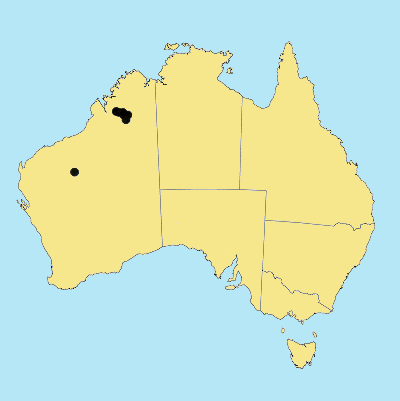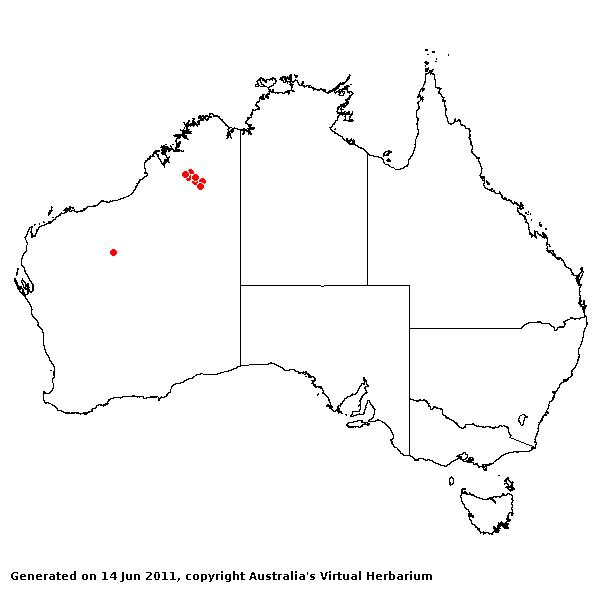Triodia pascoeana B.K.Simon. Nuytsia
8: 241 (1992).
Classification. (GPWG 2001) : Subfamily
Chloridoideae. Triodeae.
Type of Basionym or
Protologue Information: Australia: Western Australia: Dampier Dist.: NE
slope of Napier Range 3 km N of the Gibb River road on track that passes napier
Downs homestead near Yammera Gap, 17.51S 124.48E, 13 Apr 1988, B. K. Simon
3909 (HT: BRI; IT: BRI, CANB, DNA, K, NSW, PERTH).
Key references
(books and floras): [2002] D.Sharp & B.K.Simon, AusGrass, Grasses of
Australia.
Habit.
Perennial. Stolons present. Culms stature robust to moderate, 100–300 cm tall.
Leaf-sheaths smooth or scaberulous, hairy. Ligule a fringe of hairs, 0.2–1 mm
long. Leaf-blades straight or curved or flexuous, filiform, conduplicate, 6–30
cm long, 0.8–1.5 mm wide. Leaf-blade surface smooth or scaberulous, glabrous.
Inflorescence.
Inflorescence compound, a panicle of racemes. Panicle linear, dense, 30–40 cm
long, 0.5–1.5 cm wide.
Spikelets.
Spikelets pedicelled. Fertile spikelets many flowered, with at least 2 fertile
florets (3–11), comprising 3–11 fertile floret(s), with diminished florets at
the apex, oblong, laterally compressed, 3–7.5 mm long. Rhachilla internodes elongated
between glumes.
Glumes.
Glumes similar, thinner than fertile lemma. Lower glume linear or ovate,
scarious, keeled, 1-keeled, 1 -nerved. Lower glume surface glabrous. Lower
glume apex mucronate. Upper glume linear or ovate, 2–3.5 mm long, scarious, keeled,
1-keeled, 1 -nerved. Upper glume surface asperulous, glabrous. Upper glume apex
entire or lobed, mucronate or awned.
Florets.
Fertile lemma 2–3 mm long, without keel, 3 -nerved. Lemma surface glabrous. Lemma apex lobed,
muticous. Palea apex dentate. Lodicules present. Anthers 3.
Continental
Distribution: Australasia.
Australian
Distribution: Western Australia.
Western Australia:
Fitzgerald. Fortescue.
Notes.
Distinguished by its robust, non-resinous habit; long, linear, extremely
slender racemose panicle; unequal, scarious, stiffly awned, scabrous, 1-nerved
glumes; small, few-flowered spikelets; glabrous, 3-nerved, minutely lobed
lemmas.
Resembles T. microstachya in spikelet
morphology, but that species is resinous, with coarser leaves and panicle, and
its blades lack petioles. Also, the lower surface of the blades, which are
uniformly nerved in T. pascoeana, have the smooth nerveless lateral
bands which characterize T. microstachya and allied resinous species.
SW Kimberleys,
W.A. Limestone ranges and gorges; alluvial frontages and floodplains of major
watercourses; flowers Jan.-Apr., persisting until July.



